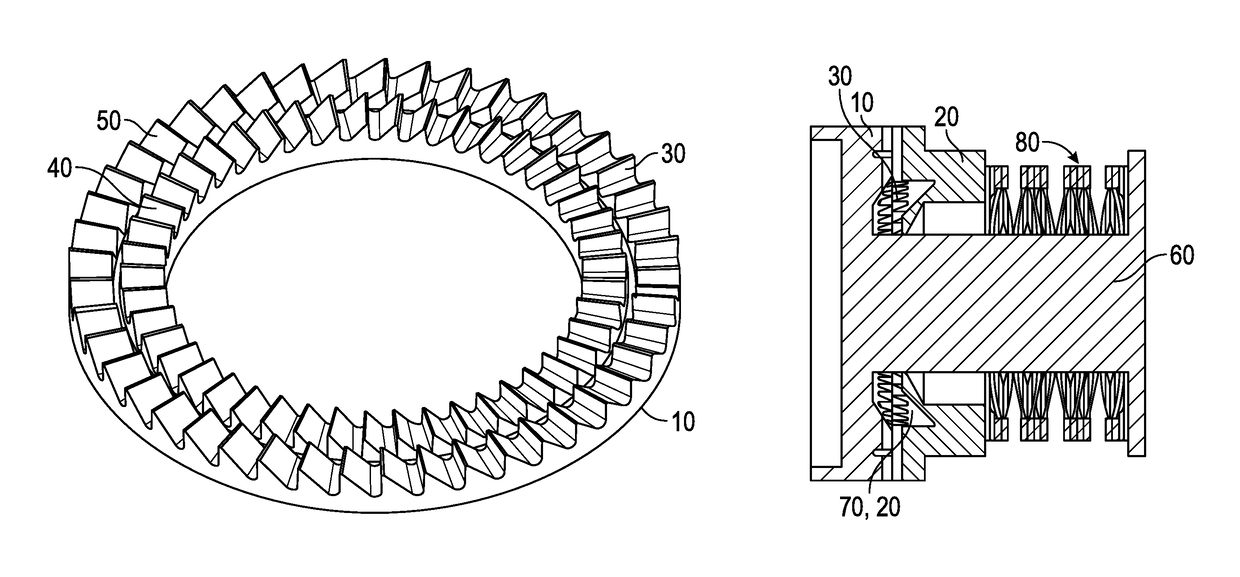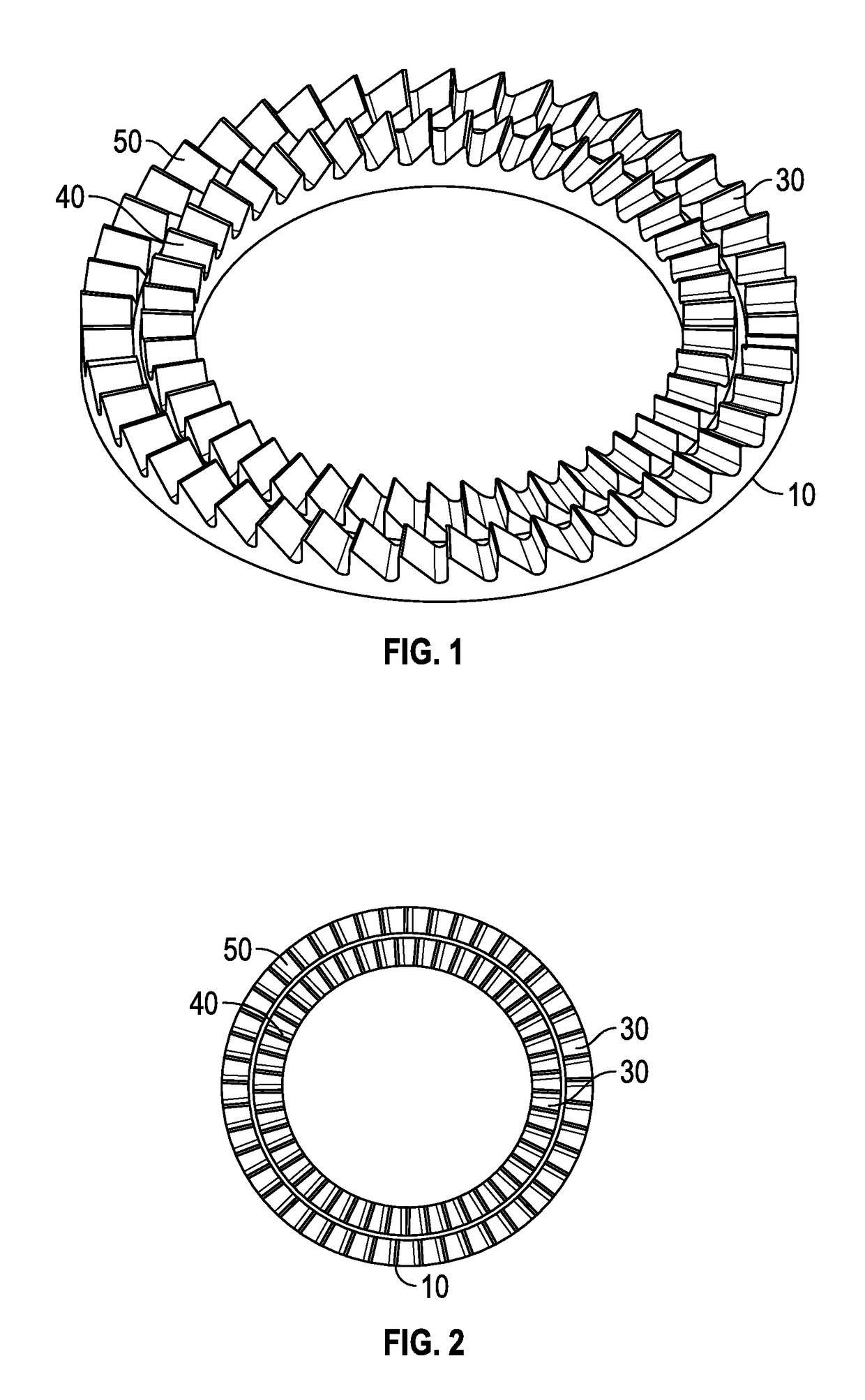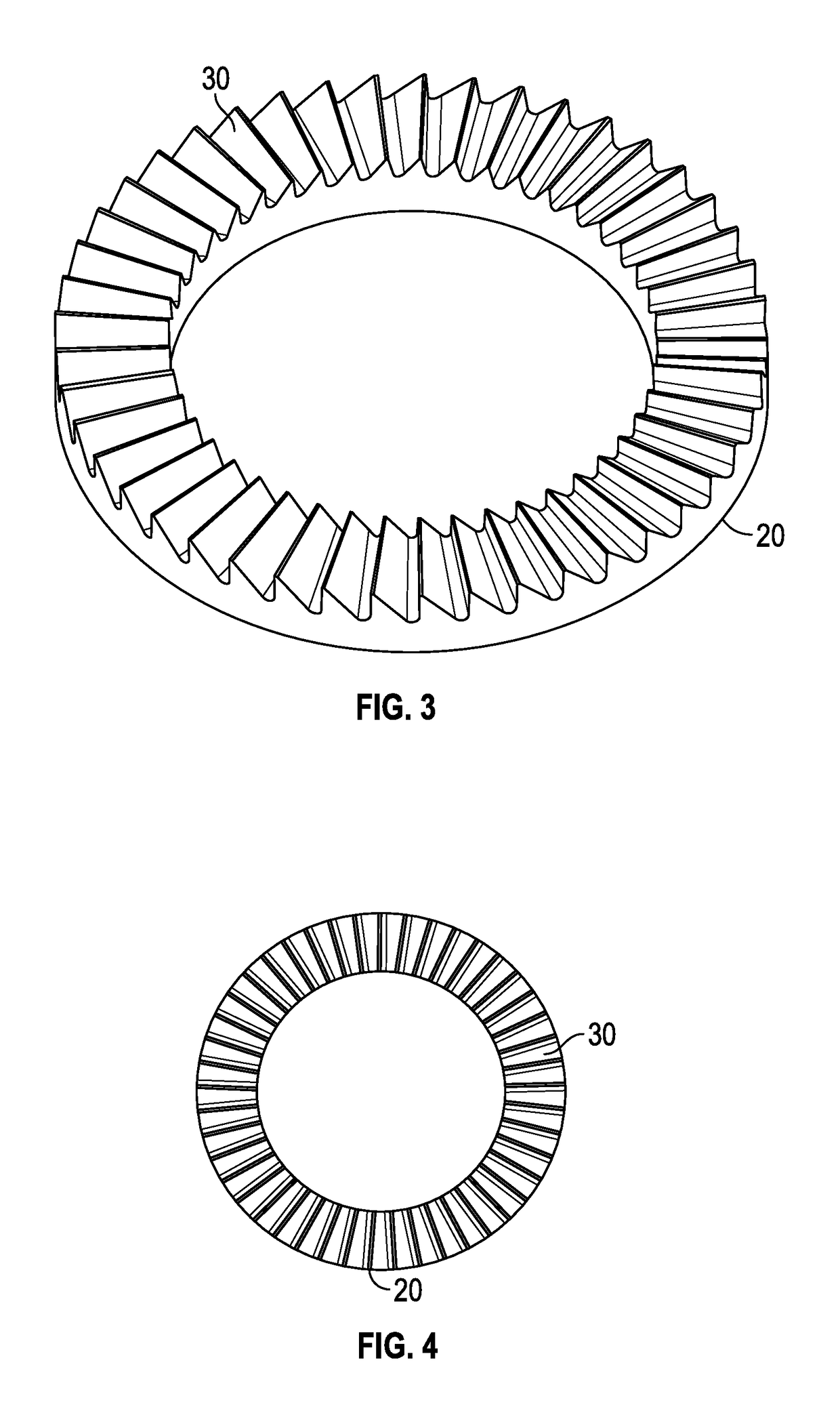Double-row ratchet locking mechanism with single-bypass (‘arming’) functionality
a technology of ratchet and function, applied in the field of mechanical locking mechanism, can solve the problems of difficult not to apply, manual pressure is considered passive, and the application and operation take a significant amount of tim
- Summary
- Abstract
- Description
- Claims
- Application Information
AI Technical Summary
Benefits of technology
Problems solved by technology
Method used
Image
Examples
example 1
Evaluation of Wound Closure Device with Ratchet Mechanism
[0068]A wound closure device was constructed having a ratchet mechanism of the present invention as shown in FIGS. 12 and 13. Several tests were performed using the device to evaluate various parameters regarding the functionality of the device utilizing ratchet mechanisms of the present invention. The various tests performed as well as test results are summarized in Table 1 below.
[0069]
TABLE 1Summary of TestingTestAcceptanceSampleRecordedPass / TestDescriptionCriteriaSizeData / CommentsFailLeakageFunctional Test toDevice must remain60Observations:PassTestdetermine if thelocked without anyAll 60 Samplesclamp can close andsignificant leakageremained locked atartificial wound andat a water pressurea water pressure ofwithstand waterof 180 mmHg180 mmHg forpressure of 180 mmHgmaintained for 30 s.30 s.(3.5 psi) for 30 s.This is to mimic aworse case scenarioblood pressure.PressureThis test evaluatesThe maximum incre-10Min: 0.49 mmPassBar...
PUM
 Login to View More
Login to View More Abstract
Description
Claims
Application Information
 Login to View More
Login to View More - R&D
- Intellectual Property
- Life Sciences
- Materials
- Tech Scout
- Unparalleled Data Quality
- Higher Quality Content
- 60% Fewer Hallucinations
Browse by: Latest US Patents, China's latest patents, Technical Efficacy Thesaurus, Application Domain, Technology Topic, Popular Technical Reports.
© 2025 PatSnap. All rights reserved.Legal|Privacy policy|Modern Slavery Act Transparency Statement|Sitemap|About US| Contact US: help@patsnap.com



